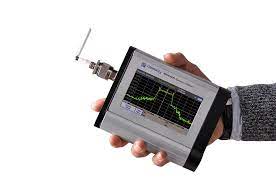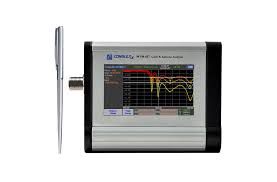![]() +971552579247 | Call Us: +971559994937
+971552579247 | Call Us: +971559994937
A Radio Frequency Testing – An Outline About the Basics and More
 Radio Frequency Testing – An Outline About the Basics and More
Radio Frequency Testing – An Outline About the Basics and More
RF or radio frequency is the rate of oscillation associated with an alternating current or voltage of a magnetic system. The system can also be electrical, electromagnetic, or mechanical. The prime characteristic for RF is the range that lies between 20kHz to 300GHz. It approximately falls under the range of audio frequencies in the upper level to a lower level of infrared frequency. It is this frequency range where the energy from the oscillating current radiates to the space from the conductor as Radio Waves.
Uses of RF:
The application of the frequency range of the radio waves is visible in regular life. A prominent example would be the radio itself, operating on frequencies with a limited boundary. Other devices of RF applications include transmitters, receivers, television, mobile phones, and even computers. The diverse utility aspects of the radio frequency are due to the ability to propagate through mediums. On application of RF current to an antenna, an electromagnetic field gets created that can propagate without a medium.
What is RF Testing?
Now that you know what RF refers to and its applications are, clarify the testing part. Radio frequency testing, in simple terms, is a method to check the frequency of radio broadcasts to ensure efficiency. The frequency traveling in the space needs the right assurance of operability to conclude efficient functioning in the related spectrum.
- Covering areas:
RF testing focus on evaluating the frequency features in the broadcasting mediums, including Wi-Fi, GPS, PMR radio, cellular devices, NFC, etc. The testing measures also verify if a device meets regulations of electromagnetic compatibility or EMC, electrical safety, or FR exposure. For the accuracy of the measuring certifications, the testing methods hold great value in multiple commercial aspects.
- Considering aspects:
For acquiring a stable and valued output through the testing process, there are certain things that need consideration. The different factors playing a role include output power, receiver and transmitter tests, sensitivity evaluation, and blocking. Besides these, considering distinct standardizations and safety ideals also plays a role in making the output accurate and reliable.
 Testing mechanisms
Testing mechanisms
A planned execution is essential to carry out the testing rightly. The setup of the testing needs a remote treatment, where the device in consideration gets placed in an isolated area. The surrounding area of the device needs to be under control to depreciate electromagnetic interference with the device. From there, the monitoring happens closely for any emission that could possibly influence the operation to interfere with the process.
Targeted aspects
The reason behind conducting the RF testing is to understand the emission strength and guideline abidance. The testing output denotes if there is any attenuation. Attenuation refers to the loss of the strength of the associated signal in the broadcasting system. Usually, any form of physical obstruction causes a loss in the signal. Thus, the testing norms focus on finding the reason behind the lost signal to improve the system in concern.
Interface identification
Sometimes, the attenuation in the device is also due to the interference of two signals. If both the signals possess similar frequency and wavelength, the problems tend to arise at the receiving end. The testing mechanism can properly identify the exact kind of interference that is causing the inconsistency. Whether it is a narrow band interference or broadband, RF evaluation can detect the possible issues before making the device available for use in the commercial domain.
Know the importance
Radio frequency compliances related to distinct devices make an important impact on the commercial front. Any device that does not abide by the standards and regulatory compliances cannot get a sanction to operate in the intended market. Thus, measuring the frequency before the release is a must. Also, the testing mechanisms help in identifying the possible faults in the overall functioning.
- Essential skills:
Those conducting the testing operations need to be an expert in the field. The modern equipment that helps in the process is easy to operate, but you need the right knowledge to manage the process. Thus, staying updated with the updates related to the testing mechanisms and the output is a must.
- Associated equipment:
RF testing on antennas and cables involves distinct types of equipment having varied potential. Be it with the spectrum analyzers or the cable analyzing devices; they produce reliable and accurate output to assure working credibility. It would help if you had a fair idea of the devices to affirm the testing credibility. Checking the measuring resources to understand the specifications is a must. Employ the right testing device to get the desired outcome.
Ending note
Reading this will help you cover the basic concepts related to radio frequency and the testing mechanisms. The equipment that performs the critical testing needs responsible manufacturing. If your service necessitates the involvement of similar testing components, connect to a reliable source to get accuracy in testing output.
Popular Tags
Recent Blogs
- What is the Optical Spectrum Analyzer used for?
- How to choose the right splicing machine?
- How to select and use an OTDR
- What is an oscilloscope? Why is it important?
- What is a Fiber Cable blowing machine? Why is it important?
- What is a RF Spectrum Analyzer & What Does it Do?
- All You Need to Know About Cable and Antenna Analyzer
- An Overall Synopsis of 5G Network Testing
